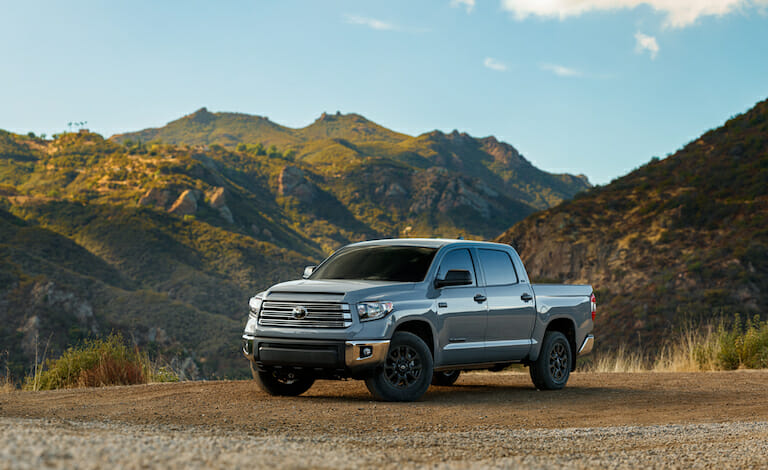How Long Does A Toyota Tundra Last
How Long Does A Toyota Tundra Last – A Simple Guide!
From my experience, my Toyota Tundra has been incredibly reliable. After driving it for over 250,000 miles and just doing regular maintenance, it’s still running great. It’s clear this truck is built to last.
A Toyota Tundra typically lasts between 200,000 and 300,000 miles with proper maintenance. Some well-cared-for models can exceed 300,000 miles.
Want to know how long your Toyota Tundra can last? Find out how to make it last for years!
What is the average lifespan of a Toyota Tundra?
The normal Toyota Tundra will go between 200,000 and 300,000 miles before it breaks down. Many Tundra owners say their trucks last much longer than 300,000 miles if they get regular repair and take good care of them. How long a car lasts rests a lot on things like regular maintenance, how you drive, and how well you take care of your car in general.
How many miles can a Toyota Tundra typically last?
The Toyota Tundra is known for being strong, and most of the time, it can go between 200,000 and 300,000 miles. Many owners say that their cars hit or even go past the 300,000-mile mark after doing regular maintenance like changing the oil and fluids on time and fixing problems as soon as they show up.

Some well-kept Tundras have been known to go over 400,000 miles, which shows how long-lasting the truck is. The vehicle’s lifespan is greatly affected by things like how often you drive, how well you take care of it, and the weather.
What factors influence the longevity of a Toyota Tundra?
- Regular Maintenance:
Consistent oil changes, fluid checks, and timely servicing help keep the engine and other components in top condition.
- Driving Habits:
Smooth driving and avoiding aggressive acceleration or heavy towing can reduce wear and tear on the truck.
- Quality of Repairs:
Addressing mechanical issues promptly and using quality parts can prevent minor problems from becoming major ones.
- Environmental Conditions:
Driving in harsh conditions, such as extreme temperatures or on salty roads, can accelerate wear. Regular washing and rust protection can mitigate this.
- Proper Storage:
Keeping the Tundra in a garage or under cover can protect it from weather-related damage and extend its lifespan.
- Usage Patterns:
Light, regular use is generally better for longevity compared to heavy-duty, high-stress use like frequent towing or off-roading.
- Owner Care:
Regular inspections, attention to warning lights, and proactive care can help identify and address potential issues early.
- Vehicle History:
A well-maintained truck with a clean history of repairs and no major accidents is likely to last longer.
How does regular maintenance affect the lifespan of a Toyota Tundra?
- Prevents Engine Wear:
Regular oil changes and filter replacements keep the engine lubricated and running smoothly, reducing wear and tear.
- Enhances Performance:
Routine checks and adjustments ensure that the engine, transmission, and other critical systems operate at their best, maintaining optimal performance.
- Avoids Costly Repairs:
Timely maintenance helps identify and address minor issues before they escalate into major, costly repairs, extending the vehicle’s overall lifespan.
- Improves Fuel Efficiency:
Proper maintenance, such as maintaining clean air filters and checking tire pressure, helps the Tundra run more efficiently, which can improve fuel economy.
- Maintains Safety:
Regular inspections of brakes, tires, and suspension systems ensure that the truck remains safe to drive, which contributes to its longevity by avoiding accidents and damage.

- Reduces Rust and Corrosion:
Routine washing and undercarriage inspections, along with addressing any rust spots early, help prevent corrosion and prolong the vehicle’s structural integrity.
- Preserves Resale Value:
A well-maintained Tundra is likely to have a higher resale value, reflecting its overall condition and extending its usability.
- Promotes Longevity of Components:
Regular checks and maintenance of critical components, like the transmission and drivetrain, ensure that these parts function well and last longer.
- Maintains Warranty Coverage:
Following the manufacturer’s recommended maintenance schedule helps keep the vehicle under warranty, protecting it from unexpected repairs and maintaining its value.
What are some common issues that can shorten a Toyota Tundra’s lifespan?
Engine Problems:
Issues such as overheating, oil sludge buildup, or timing belt failure can severely impact the engine’s performance and longevity. Regular oil changes and engine maintenance can help mitigate these risks.
Transmission Issues:
Transmission problems, including slipping or rough shifting, can be caused by poor maintenance or faulty components. Keeping the transmission fluid at proper levels and addressing issues early is crucial.
Rust and Corrosion:
Rust, especially on the frame or undercarriage, can compromise the truck’s structural integrity. This is often exacerbated by driving in salty or wet environments without regular cleaning and rust protection.
Suspension Wear:
Problems with the suspension system, such as worn-out shocks or struts, can affect handling and ride comfort. Regular inspection and maintenance of suspension components are necessary.
Electrical System Failures:
Electrical issues, including problems with wiring, fuses, or battery, can lead to various malfunctions. Keeping the electrical system in check helps prevent these problems.
Cooling System Failures:
A malfunctioning radiator, thermostat, or water pump can lead to engine overheating. Regular checks of the cooling system components are essential to prevent overheating.
Brake System Issues:
Worn brake pads, rotors, or calipers can lead to decreased braking performance and potential safety risks. Regular inspection and replacement of brake components are necessary.
Faulty Air Conditioning:
Problems with the air conditioning system can affect comfort and lead to expensive repairs if not addressed early. Regular servicing can help maintain the system’s efficiency.
Poor Maintenance Practices:
Neglecting routine maintenance tasks, such as changing fluids or replacing filters, can lead to a build-up of problems and shorten the vehicle’s lifespan.
Excessive Towing:
Frequent heavy towing beyond the truck’s capacity can strain the engine, transmission, and suspension, leading to premature wear and potential failures. Adhering to the manufacturer’s towing limits helps avoid such issues.
Can a Toyota Tundra last beyond 300,000 miles?
Yes, if you take good care of your Toyota Tundra, it can last longer than 300,000 miles. Many Tundra owners who do normal maintenance like changing the oil, checking the fluids, and fixing problems when they happen have said that their trucks have reached or even surpassed this mileage mark. The Tundra is built to last for a long time because it has strong engineering and high-quality parts that are made to withstand heavy use for many years.

What are the signs that a Toyota Tundra might need major repairs or replacement?
One or more of these signs could mean that your Toyota Tundra needs major fixes or even replacement. Warning lights that don’t go away, like the oil pressure light or the “check engine” light, can mean that there are major problems that need to be fixed right away. Also, strange noises like grinding or knocking coming from the engine or transmission are often a sign of parts that are worn out or breaking. A lot of exhaust smoke and fluid leaks are also red flags that could mean there are serious problems with the engine or drivetrain that need major fixes.
FAQS:
Does the model year of a Toyota Tundra affect its lifespan?
Yes, the model year can impact lifespan due to improvements in engineering and technology over the years. Newer models may have updated components and features that could influence longevity compared to older models.
Are there specific signs that indicate my Toyota Tundra might need an engine overhaul?
Signs that your Tundra might need an engine overhaul include severe loss of power, excessive oil consumption, persistent engine knocking or pinging, and significant exhaust smoke.
How can I protect my Toyota Tundra from environmental damage to extend its lifespan?
To protect your Toyota Tundra from environmental damage, regularly wash and wax the vehicle, especially in areas with road salt or harsh weather. Using rust-proofing treatments and keeping the vehicle stored in a garage or under cover can also help extend its lifespan.
Conclusion:
If you take care of your Toyota Tundra, it should last between 200,000 and 300,000 miles. Many Tundras can go over 300,000 miles with proper care, showing that they are built to last. Taking care of your Tundra and fixing it when it breaks down can help it last for many years.

I’m Harry Edward, your Toyota car expert. With 5 years of experience in Toyota car repair, I share practical tips and insights to help you keep your vehicle in top condition.
From routine maintenance to fixing common issues, my goal is to make your Toyota ownership experience smooth and enjoyable.







